Nobody likes ants in the house (especially after a family get-together ends), but some species can be the herald of more than just an annoying line of protein bites marching across your kitchen floor.
Carpenter ants have a particularly nasty reputation among homeowners. But just how much should you worry about these tiny critters? Let’s look at the facts and what you can do to get rid of carpenter ants.
Getting to Know Carpenter Ants
Carpenter ants may not be the most destructive or painful pests in the ant (and near-ant) world, but they’re still a force to be reckoned with.
The common nickname “wood ant” doesn’t help dispel some of the rumors about their relationship with wood. Thus, it’s important to get a better understanding of these critters before attempting to get rid of them.
Taxonomy
Carpenter ants are an entire genus comprised of roughly 600 species, 43 of which are native to North America. Their genus name, Camponotus, means “flat back”, a trait which may be found on many carpenter species. One of the most infamous species of carpenter ant is the black carpenter ant (Camponotus pennsylvanicus).
As with other ants, these critters are primarily female, with a single queen, workers, and a handful of male drones in the colony.
What Do Carpenter Ants Eat?
Despite popular belief, wood ants have a varied diet which is similar to many other ant species, such as pavement ants. They will gang up on insects for protein, and maintain aphid herds. They also drink various plant juices and may be attracted by spilled sugar or other sweet things.
See Also: How to Get Rid of Grease Ants
Why Carpenter Ants Are a Dangerous Pest
Carpenter ants make their homes in moist or rotting wood. They’re unable to ingest cellulose, setting them apart from termites. However, a home with a carpenter ant infestation is a signal that the wood in your home may be in poor health, and the colonies can lead to extensive structural damage.
This is further complicated by their unusual ability to create satellite colonies. These colonies lack a queen or nursery, allowing them to be built in less hospitable places.
Satellite colonies are constructed adjacent to the main colony. As a result, a single queen’s colony can overtake an entire structure bit by bit. While they won’t create the same huge supercolonies as Argentine ants, an entire colony of carpenter ants in your home can lead to a fortune in damages.
How Carpenter Ants Build Colonies
A carpenter colony doesn’t begin with healthy wood. Instead, the ants will search for parts of the wood that have already been compromised by other critters, mold, or fungus.
Damp wood is especially easy for them to cut and remove. Wood that has begun to crack may also provide shelter, as the dry surface might betray trapped rainwater deeper in the cracks.
The ants will begin to cut away at damaged wood, creating a series of galleries in which the workers will live, form nurseries, and store supplies. The queen gets her own chamber where she’ll spend the rest of her life.
Satellite colonies will be less equipped than the main colony. However, the workers will still try to take advantage of damaged wood and open cavities before chewing away at healthy wood.
As they cannot digest the cuttings, their frass is left near colony entrances in designated dump sites. This allows the debris to be washed away by rain or claimed by other critters brave enough to risk being seen as a potential invader.
Locating a Carpenter Ant Nest
While some carpenter ant species burrow, the majority build their colonies in moist or decaying wood. The main colony requires a damp location, as the eggs and larvae are very dependent on a specific humidity level to survive.
Satellite colonies tend to take up structural voids nearby, such as door hollows and wall gaps. If the main colony is located outdoors, a close proximity is often enough for the satellites to infest a structure.
Because the ants can’t digest cellulose, you’ll often find piles of tiny wood shavings, or frass, near colony entrances. The main colony will most likely be located near a source of water. This may be a bathroom or kitchen, and both windows and doors are popular indoor nesting sites.
You can’t pinpoint a colony simply by spotting a forager, as the ants can travel through your entire home when gathering food. Scent trails make it possible for workers to navigate far from the colony and still find their way back. They also tend to be more active in the dark when predators are less likely to appear.
These factors can make them hard to track. Therefore, it’s often easier to note active areas as potential bait locations than to try and trace them back to the colony.
See Also: 23 Common Ants Found in Texas
Carpenter Ants vs. Other Ants
Carpenter ants tend to be larger than other ants, with the queens measuring as much as an inch long. However, there’s a lot of variation in size, even among the workers of a single colony.
Species are usually red, yellow, or black; with variations present in several species. This range of appearances can make them harder to identify.
They also lack a stinger and will defend using a bite-and-spray tactic. While it can be more painful than a regular ant bite, it poses no threat to humans except those who have a severe allergy to formic acid.
See Also: How to Get Rid of Ghost Ants
Carpenter Ants vs Termites
While it might be difficult to tell carpenter ants from other ants (they can both be found in walls), there are some obvious differences that set them apart from termites.
One of the most obvious is the point where the thorax and abdomen meet. This is narrow on carpenter ants, but thick on termites. Termites also hate light and will run when exposed to a light source whereas carpenter ants prefer dark but still forage in light.
Carpenter ants have the typical elbowed antennae of ants, whereas termites have straight antennae. Wood ants will also travel longer distances, while termites stay close to their colonies.
Finally, a carpenter ant alate’s forewings are larger and sometimes differently shaped than the hind wings. They leave no stumps behind when they fall off. Termites, conversely, have similar size and shape to both fore and hind wings, and retain wing stubs after the wings fall off.
See Also: Getting Rid of Flying Termites
Getting Rid of Carpenter Ants
Let’s be perfectly honest here. It’s far easier to prevent a wood ant infestation than to get rod of it. In fact, this is one critter where you will almost always need to hire a pest control professional. That’s not to say you can’t greatly reduce or even eliminate indoor nests. The problem is you never know if you’ve taken out the main colony or a satellite.
Natural Remedies to Kill Carpenter Ants
Sometimes the best solutions are the ones you already have in your home. These home remedies are less effective in the short term, but can still combat superbugs when they’ve grown resistant to chemicals.
Destroying Carpenter Ant Nests From the Inside
If you’ve managed to locate the main colony, there are a few things you can inject into it that will help eliminate its population. Diatomaceous earth can have devastating results, as it butchers any ants passing through the treated passage or gallery.
As ants prefer a clean house, workers will remove corpses, sometimes cannibalising the remains. This may lead them to step into or even consume this deadly dust.
Boric acid is another chemical that can tear colonies to shreds. This useful substance comes in powder or liquid form. If spraying, you’ll want to be careful around any electrical equipment. It’s best to use this outside of your walls. However, careful application can help with taking out a colony, especially if you need to replace the infested material anyway.
You can also make a boric acid ant bait using one part boric acid to ten parts of sugar water and coating a bait food with it. Conversely, you may choose to simply mix three tablespoons of boric acid with 1/2 cup sugar and sprinkle it along known foraging paths.
There’s one additional remedy you can use on outdoor nests that can’t be used indoors. Locate the entrance to the carpenter ant colony and slowly pour boiling water into the holes.
It will kill the ants on contact and even eliminate the queen and eggs without poisoning the surrounding soil. Be warned, this can be quite dangerous and could damage plant roots.
Related: 4 Homemade Borax Ant Killer Recipes
Making Use of Common Remedies
Many general home insect remedies will also work as effective carpenter ant control methods. These include baking soda, dishwashing liquid, and neem oil (which disrupts their hormones and can assist kill methods in reducing a population.
Essential oils, spices, and Vaseline all work to either repel carpenter ants or interfere with pheromone trails. They won’t kill or harm the ants, but can help direct these critters away from their food routes. This makes it easier to trick them into going after bait.
Can Vinegar Kill Carpenter Ants?
Believe it or not, white vinegar is not only deadly to these critters, it can also serve as an effective repellent. The pungent smell will chase ants away, and the acidity is strong enough to kill them.
A spray of equal parts vinegar and water may be used to attack a colony directly. Of course, caution should be used to avoid wetting any wires or further damage wood.
Getting Rid of Carpenter Ants Using Chemicals
Now that we’ve taken a look at the natural killers, let’s look at the deadlier chemical methods. These may work faster, but they come with greater risk.
Chemical control often poses health risks to your family or beneficial critters and target pests may become tolerant. However, when it comes to a carpenter ant infestation, you want to take care of the problem quickly. There are three main chemical methods: baits, insecticides, and repellents.
Baits
You’re probably most familiar with baits. Go for a bait trap that encloses the bait to reduce the risk of harming pets or beneficial critters. Terro bait stations are a popular indoor option and work well. Bayer Advanced makes an excellent carpenter ant/termite killer for outdoor use around your home’s perimeter.
Lay the bait along a wall or somewhere you’ve seen ants following a chemical path to and from a food source. The ants will enter the trap, place the poison in their communal stomach, then take it back to the colony and distribute it to the rest of the colony as food.
Note that there are specialty traps on the market with bait compositions designed specifically with carpenter ants in mind.
Insecticides
Insecticides, as we’ve already discussed, are great for emergency perimeter defense. However, they’re not as effective against an established colony.
A possible exception to this is using a chemical bomb or fogger such as Raid Max or Hot Shot. These work great for all types of ants as well as fleas, pill bugs, houseflies, roaches, spiders and their eggs, and other insects.
You will need to first locate the colony and drill a few holes into it so the fumes can fill the galleries. This method requires some careful research, and consulting a pest control expert is advisable so you can locate the colony and pick the best bombs for the job.
Related: 15 Ways to Get Rid of Ant Hills
Repellents
At the other end of the spectrum, you have repellents. These are best used as a preventative measure. However, they can be a good followup to ensuring a freshly destroyed colony doesn’t get new tenants.
Ant repellents are usually scent-based and will need to be reapplied frequently to retain their effect. They’re a good measure when you’re waiting for a professional repairman to replace the damaged wood, but a poor long-term method.
Mighty Mint is a good example of a carpenter ant repellent that uses peppermint oil.
Carpenter Ant Prevention
As with many other pests, proactive measures can save a lot of expense and heartache. Prevention isn’t as difficult as it may sound. The best part is, these measures can help protect your home from other critters and even non-pest damage.
When Carpenter Ants Fly: Keeping Queens Out
Queens are the primary threat to homes which are at risk of infestation. Not only can alates (winged drones and queens) fly, they use this ability to reach places where a colony might otherwise be difficult to establish.
Thus, that rotting window ledge in your attic may be the perfect spot for freshly mated queens to build their nests. Remember, carpenter ants cannot eat wood, so the health of any exposed wood on your home plays a huge role in how attractive it is.
Be sure to seal your windows and doors. Weatherproof the outside of your home and replace any damaged wood. You may also wish to invest in siding or some other protective covering. Just be sure to seal all the edges to prevent moisture and critters from getting under it.
Insulating your home will also eliminate potential nesting sites such as wall voids and may even alert you to previously undiscovered critter infestations.
Related: How to Critter-Proof Your Home
Eliminating Attractive Features
Carpenter ants want three main things: food, water, and a suitable environment for their queen. Getting rid of these three things will convince scouts to look elsewhere.
This means keeping a clean home and clearing up any kitchen spills as they happen. Check pipes for any signs of leakage and make sure your taps can turn off completely.
Think of the Trees
Wood ants usually build their nests in wood, so you need to consider any trees on the property. Remove any old tree stumps. For live trees, consider putting them on a neem soil soak regimen.
Also, trim back any tree branches too close to your home. If touching, they can build a bridge for ands and other insects. And if they’re close, squirrels and other climbers can jump the gap.
Likewise, try to keep some clearance between shrubs and your outer walls, as this can not only shelter pests, but give better access for ants and other smaller insects to your walls above the foundation line.
Adding Some Barriers
Finally, consider adding a protective barrier around your home. The most obvious method is one of our favorite go-tos: diatomaceous earth. These ground fossils are generally safe for children and pets and work a charm, as we mentioned earlier.
The dusty particles are deadly to insects, but can also be irritating to small critters who try walking on it. Simply sprinkle some around the foundation of your home occasionally (and after it rains) to create an insect-scale minefield.
In cases where you feel there is a more immediate threat of invasion, you can also spray your foundation down with a perimeter control insecticide.
These can provide an effective solution over time to a range of insect threats, but may pose health risks. Be sure to check labels carefully before purchase or use and follow all directions.
- How to Get Rid of Hawks - March 8, 2024
- How to Get Rid of Pill Bugs (Rolly Pollies) - March 1, 2024
- How to Get Rid of Groundhogs (Woodchucks) - February 5, 2024

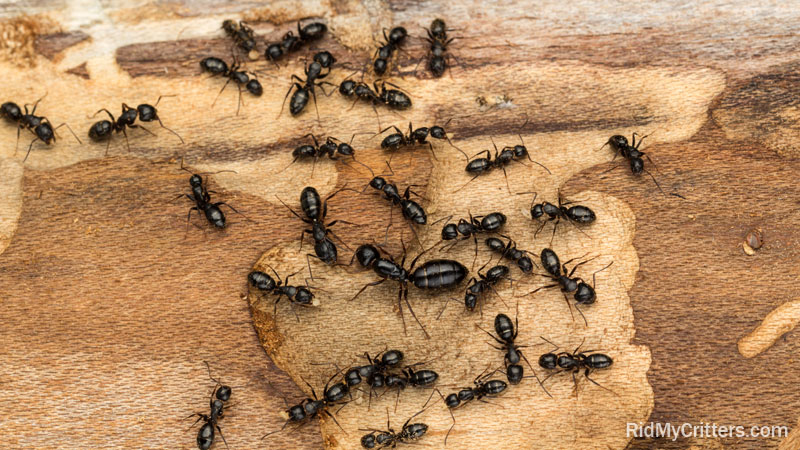
 Just tell me how to get rid of ’em.
Just tell me how to get rid of ’em.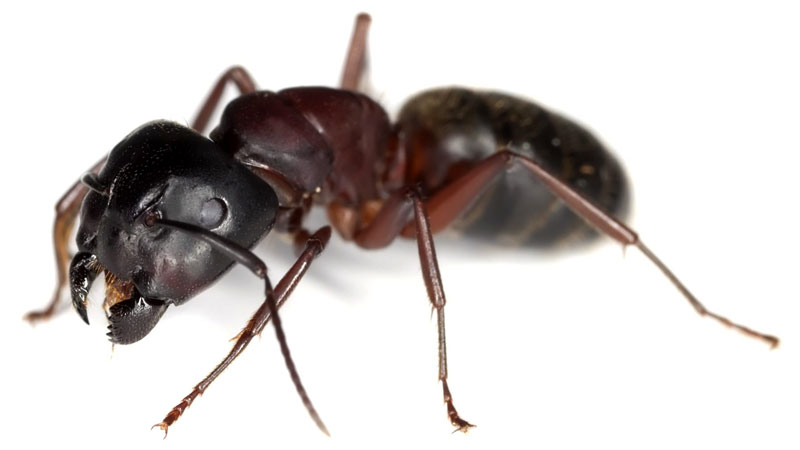
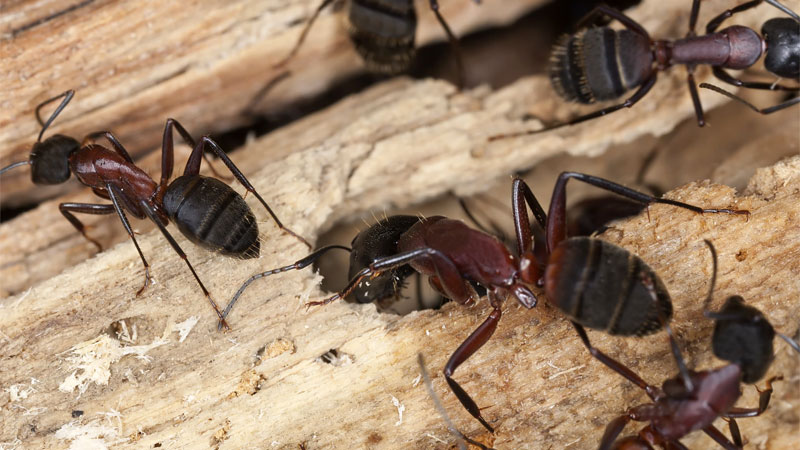
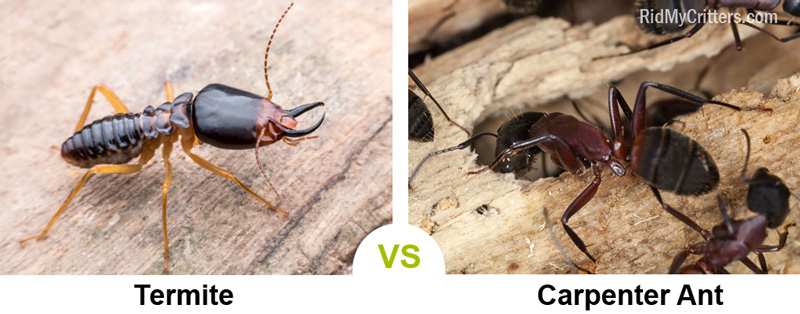
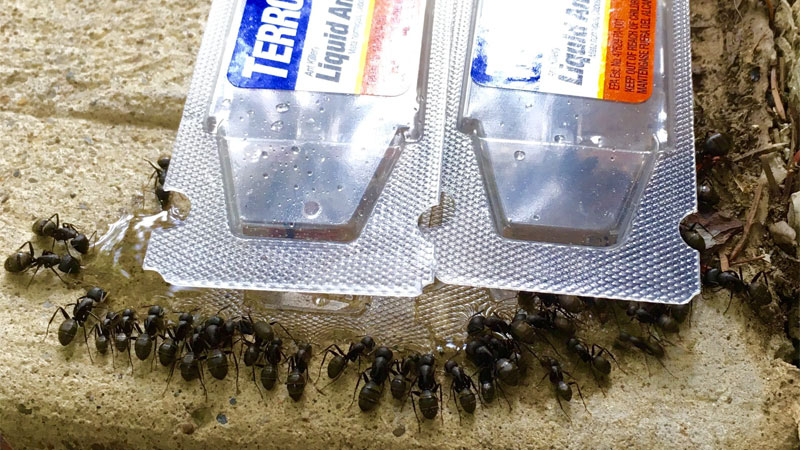
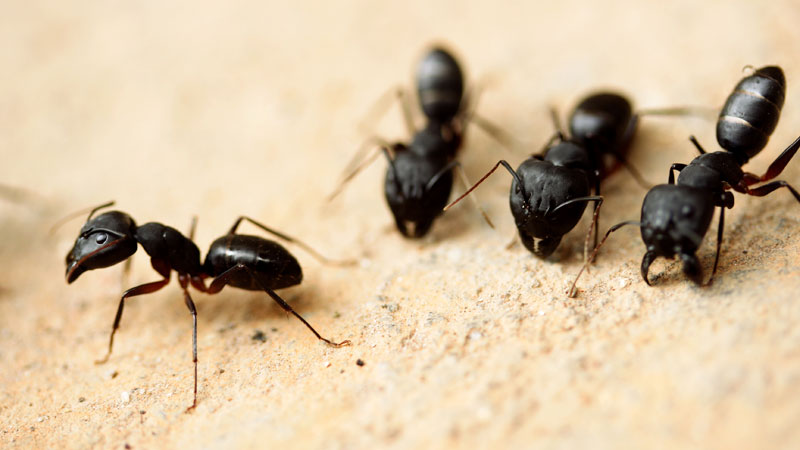
Thank you for your article. I will try your methods once i get home. Keeping my fingers crossed !!!